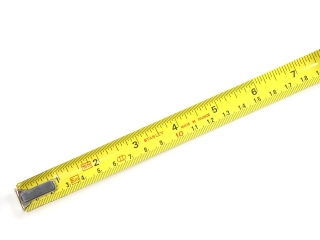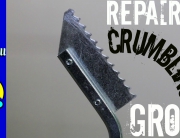 Metric Conversion for DIY Enthusiasts. Have you ever wondered why most of the world uses the metric system of measurement, known as the International System of Units (SI), but the U.S. still largely uses the U.S. Customary System? The metric system was developed in France in 1799, immediately following the revolution there, and technically it has been legal to use the metric system in the United States since 1866. We have not yet fully adopted the metric system, however, despite an attempt by the U.S. government to do so in 1975. Why is this? Well, some experts believe that the cost of full conversion to the metric system would be prohibitive. Others believe that it is that good old die-hard American independence that has prevented us from jumping on board full force with most of the rest of the world. Still others believe that the reason is simply that the US Congress has never made metrification mandatory in any of their legislation. And let’s not forget that there are many people out there who DO think we should fully convert to the metric system.
Metric Conversion for DIY Enthusiasts. Have you ever wondered why most of the world uses the metric system of measurement, known as the International System of Units (SI), but the U.S. still largely uses the U.S. Customary System? The metric system was developed in France in 1799, immediately following the revolution there, and technically it has been legal to use the metric system in the United States since 1866. We have not yet fully adopted the metric system, however, despite an attempt by the U.S. government to do so in 1975. Why is this? Well, some experts believe that the cost of full conversion to the metric system would be prohibitive. Others believe that it is that good old die-hard American independence that has prevented us from jumping on board full force with most of the rest of the world. Still others believe that the reason is simply that the US Congress has never made metrification mandatory in any of their legislation. And let’s not forget that there are many people out there who DO think we should fully convert to the metric system.
Whatever the reason for it, the U.S. has stayed largely with the U.S. Customary System, with some industries adopting the metric system fully or in part. Pharmaceuticals is a notable industry which has fully adopted the metric system, and so is considered to be a “hard metric” industry. Other products using primarily metric measurements include film (think “35mm”), bicycles, and many tools…which we will come back to later. Other industries and products are considered to be “soft metric”, which means they utilize both systems of measurement. Consider soft drinks, and how it’s now commonplace to find two-liter bottles for sale at the store, rather than quarts or half-gallons. Though milk is still sold by the gallon! Likewise, weather is generally measured in Fahrenheit units in the U.S., though there are some states which border Canada that give both Fahrenheit and Celsius measurements in their forecasts.
So how does all this affect you as a DIY home improvement enthusiast and as a consumer? Well, because the metric system is used in many power tools, most of the automotive industry, and all of the world of science, becoming metric system-literate just makes sense and can only help you! Additionally, the use of the metric system in the U.S. is quietly growing more prevalent, and may become even more popular or possibly mandatory in the future, so you will just be one step ahead of the game. Interestingly, there are some products in which both metric and non-metric measurements are even combined on the same item. Some that come to mind are light bulbs, where the bulb size is measured in eighths of an inch, but the socket is measured in millimeters. Then you have tires, for which the tread width is measured in millimeters, but the rim diameter is measured in inches.
 The good news is that conversion tools abound on the internet, and so you can slowly but surely pick up how the metric system works, whether you want to apply it to auto mechanics, power tools, or cooking! One of our favorite metric conversion websites is appropriately named Metric Conversions. They even have a downloadable app, so you can take metric conversion with you anywhere you go (this can be especially helpful at the home improvement store!) The other great thing about the metric system is that it is structured in a logical way, that is easy to understand and easy to learn, (certainly a lot easier than the US Customary System!). In the very simplest of terms, the metric system is comprised of 7 base units which operate in powers of 10. If you learn about those, you will be off to a great start and deeper understanding of the metric system and how it applies to your daily life. For more information about this, check out How Stuff Works: How the Metric System Works.
The good news is that conversion tools abound on the internet, and so you can slowly but surely pick up how the metric system works, whether you want to apply it to auto mechanics, power tools, or cooking! One of our favorite metric conversion websites is appropriately named Metric Conversions. They even have a downloadable app, so you can take metric conversion with you anywhere you go (this can be especially helpful at the home improvement store!) The other great thing about the metric system is that it is structured in a logical way, that is easy to understand and easy to learn, (certainly a lot easier than the US Customary System!). In the very simplest of terms, the metric system is comprised of 7 base units which operate in powers of 10. If you learn about those, you will be off to a great start and deeper understanding of the metric system and how it applies to your daily life. For more information about this, check out How Stuff Works: How the Metric System Works.
In summary, we highly recommend to all of our readers that you learn about the metric system! You can do this!
by See Jane Drill, Copyright 2016, All Rights Reserved
Sources:
How Stuff Works: Why the US Isn’t on the Metric System
Wikipedia: Metrification in the United States
“The Metric System, the United States of America, and Scientific Literacy”, by Adam Blankenbicker, published in PLOS Blogs






Leave A Comment